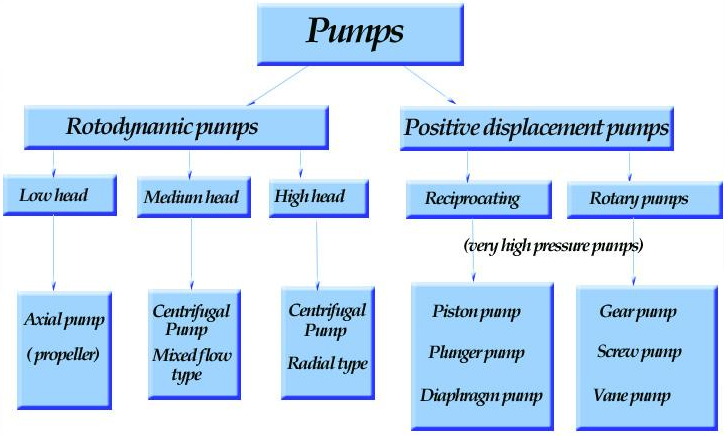Types of pumps
https://www.ny-engineers.com/blog/main-types-of-pumps

Fig.1. Pump classification.1
SUB-TYPE | DESCRIPTION | EXAMPLES |
Reciprocating Pump | Flow is established inside a cavity that expands and contracts, such as a piston. Water moves into the cavity during expansion, and is forced out during contraction, while the flow direction is controlled by using check valves. | Bladder |
Rotary Pump | This pump type uses a rotor that traps water in cavities, releasing it at the outlet. These cavities can be the spaces between gear teeth or screw threads, among other configurations. Some designs use more than one shaft, but the principle is the same: the rotor shape is designed to capture “pockets” of water and displace them in the intended direction. | Gear |
SUB-TYPE | DESCRIPTION | PERFORMANCE |
Axial Flow Pump | Also known as a propeller pump, it produces water flow along the impeller shaft direction. | High flow rate |
Radial Flow Pump | This pump type produces flow in a direction perpendicular to the shaft (90° angle). | Low flow rate |
Mixed Flow Pump | This pump type combines radial and axial flow, producing a conical flow pattern around the shaft. | Medium flow rate |
No comments:
Post a Comment